Lida Group Pioneers High Quality Container House Solutions Using Advanced Prefab Container Construction for Global Housing Shortages
2025-Jul-29 16:31:32
By Admin
1. Introduction
In the face of a worsening global housing crisis, innovative construction solutions have become more critical than ever. Rapid urbanization, population growth, natural disasters, and economic disparities have collectively created a severe shortage of safe, affordable, and sustainable housing across the globe. Lida Group, a renowned leader in the construction industry with decades of experience, has emerged as a pioneer in addressing this challenge through its high-quality container house solutions built on advanced prefab container construction techniques.
Established in 1993, Lida Group has grown into a globally recognized enterprise with operations spanning over 145 countries and regions. The company holds a suite of prestigious certifications, including ISO 9001, ISO 14001, ISO 45001, and EU CE certification (EN 1090), underscoring its commitment to quality, environmental responsibility, and safety. With expertise spanning design, production, installation, and marketing, Lida Group has leveraged its engineering prowess to transform ordinary shipping containers into durable, comfortable, and versatile living spaces. By combining advanced prefabrication technologies with a deep understanding of global housing needs, Lida Group is redefining what is possible in affordable and sustainable housing.
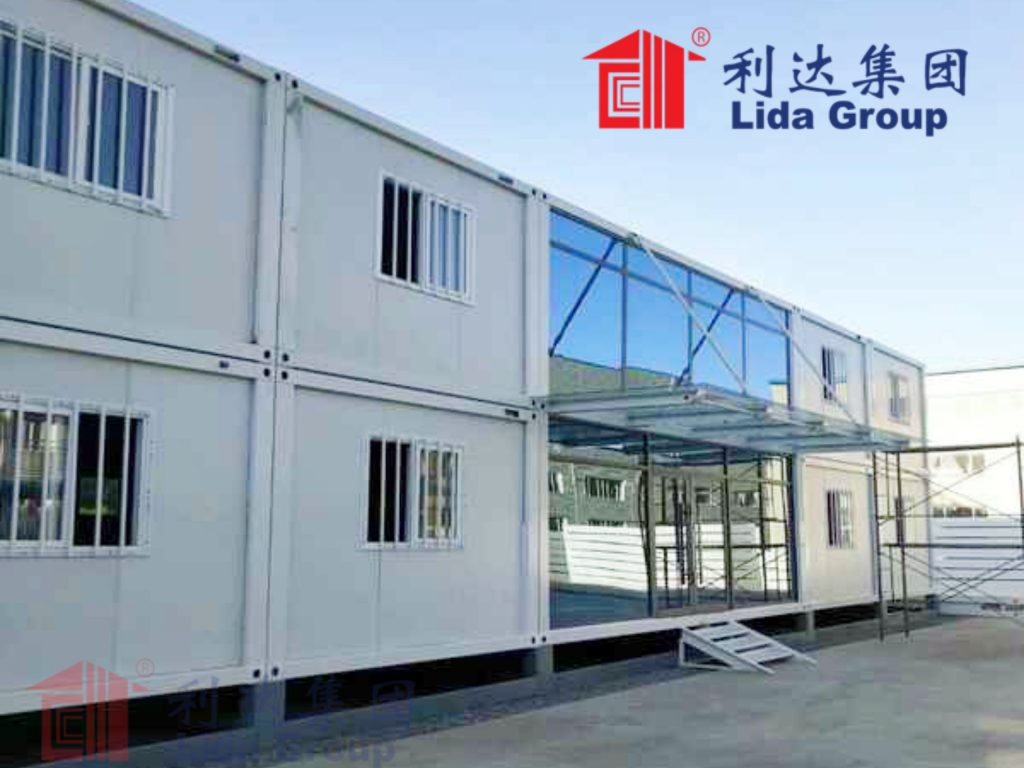
2. The Global Housing Shortage: A Pressing Challenge
2.1 Scale and Scope of the Crisis
The global housing shortage has reached alarming proportions. According to recent reports from international organizations, over 1.6 billion people worldwide lack adequate housing, and this number is projected to rise to 3 billion by 2030. The crisis is particularly acute in developing countries, where rapid urbanization has outpaced the construction of new housing. Cities in regions such as sub-Saharan Africa, South Asia, and Latin America are grappling with overcrowded slums, informal settlements, and inadequate living conditions, where families often share small spaces without access to basic amenities like clean water, sanitation, and electricity.
Even in developed countries, housing shortages have become a significant issue. Skyrocketing real estate prices, stagnant wage growth, and limited construction of affordable housing have left millions of low- and middle-income households struggling to find suitable accommodation. Additionally, natural disasters such as earthquakes, hurricanes, and floods have exacerbated the problem, destroying existing housing stock and displacing communities in need of immediate shelter.
2.2 Limitations of Traditional Construction in Addressing the Shortage
Traditional construction methods have proven insufficient to meet the growing demand for housing. These methods are often time-consuming, labor-intensive, and costly, relying on on-site fabrication of building components and subject to delays caused by weather, labor shortages, and supply chain disruptions. In many cases, traditional construction also generates significant waste, consumes large amounts of energy, and has a high carbon footprint, making it unsustainable in the long term.
Moreover, traditional housing solutions are often inflexible, unable to adapt to the changing needs of communities. They may not be easily expandable or modifiable, and their construction timelines are too slow to provide rapid relief in post-disaster scenarios or during sudden population influxes. These limitations have highlighted the need for innovative, efficient, and sustainable alternatives to traditional construction—alternatives that Lida Group’s prefab container house solutions aim to provide.
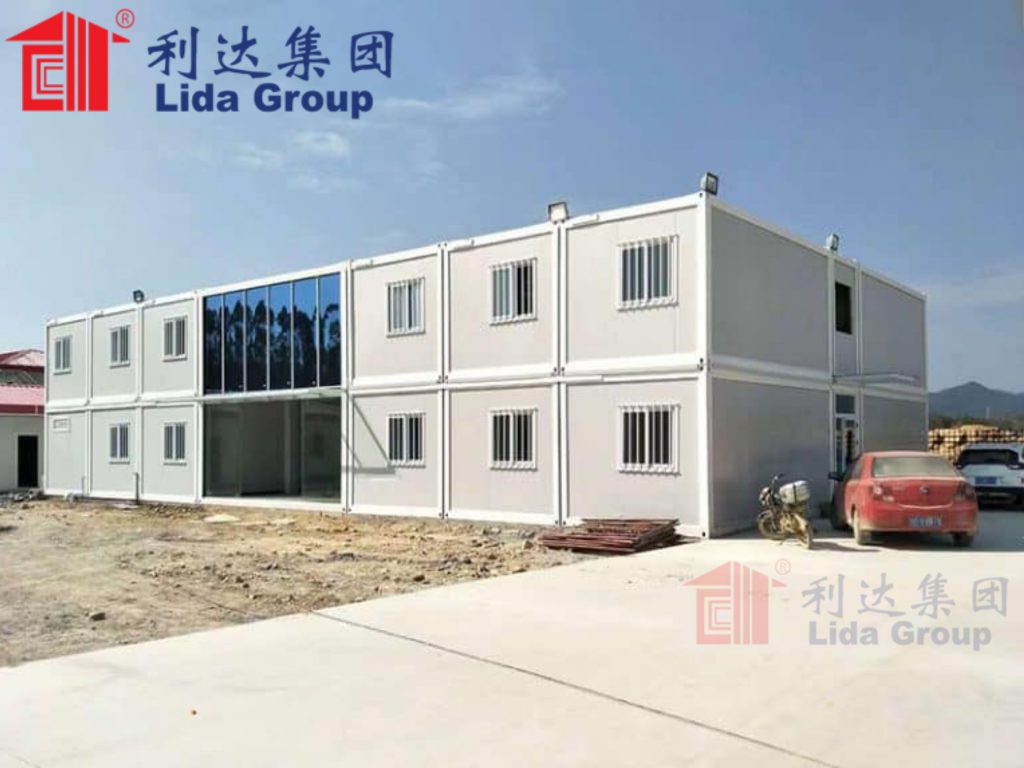
3. The Advantages of Prefab Container Construction for Housing
3.1 Speed and Efficiency
One of the most significant advantages of prefab container construction is its speed and efficiency. Unlike traditional construction, which builds structures from the ground up on-site, prefab container houses are manufactured in controlled factory environments. Lida Group’s production facilities use advanced assembly lines and precision machinery to fabricate container house components, including walls, floors, roofs, and interior fixtures, with minimal variation. This off-site production allows for parallel processing: while the container modules are being manufactured in the factory, site preparation (such as foundation work) can occur simultaneously.
As a result, the time from design to completion for a prefab container house is significantly reduced. A typical single-family container house can be manufactured in 2–4 weeks and assembled on-site in just a few days, compared to several months or even years for a traditionally built house of similar size. This rapid construction timeline is invaluable in emergency situations, where displaced communities need immediate shelter, and in urban areas where quick delivery of housing can help alleviate overcrowding.
3.2 Cost-Effectiveness
Prefab container construction also offers substantial cost savings compared to traditional methods. The standardized, mass-produced nature of container house components reduces material waste and lowers manufacturing costs. By leveraging economies of scale, Lida Group can produce container modules at a lower per-unit cost, passing these savings on to clients. Additionally, the reduced construction time minimizes labor costs, as fewer workers are needed on-site for a shorter duration, and there are fewer delays that can drive up expenses.
Container houses also benefit from the use of recycled materials. Many of Lida Group’s container houses are built using repurposed shipping containers, which would otherwise end up in landfills. Reusing these containers not only reduces waste but also lowers the cost of raw materials, as the structural framework of the container—typically made of high-strength steel—already exists, eliminating the need to fabricate new framing from scratch.
3.3 Sustainability and Environmental Benefits
Sustainability is a core advantage of prefab container construction. Lida Group’s container house solutions prioritize environmental responsibility throughout the entire lifecycle of the product. The use of recycled shipping containers reduces the demand for new steel production, which is energy-intensive and generates large amounts of greenhouse gas emissions. In fact, repurposing a single shipping container saves approximately 3,500 kilograms of steel and prevents the emission of around 1.8 tons of carbon dioxide.
Factory-based production also minimizes waste. Lida Group’s manufacturing processes are designed to optimize material usage, with leftover materials recycled or reused in other production runs. On-site construction waste is further reduced, as prefab components are delivered to the site ready for assembly, eliminating the need for on-site cutting, shaping, and disposal of excess materials.
Moreover, container houses can be designed to be energy-efficient. Lida Group integrates insulation materials, energy-efficient windows, and solar panels into its container house designs, reducing energy consumption for heating, cooling, and electricity. Many models also include rainwater harvesting systems and low-flow plumbing fixtures to conserve water, making them suitable for regions with limited water resources.
3.4 Durability and Structural Integrity
Shipping containers are engineered to withstand harsh conditions during long-distance transportation, including extreme weather, heavy loads, and rough handling. This inherent durability translates into strong, resilient housing structures. Lida Group enhances this durability further by reinforcing container frames, treating steel surfaces to prevent corrosion, and using high-quality materials for cladding, roofing, and interior finishes.
Container houses built by Lida Group are designed to meet or exceed local building codes and standards for structural safety, including resistance to earthquakes, wind, and snow loads. Their steel frames provide exceptional strength, ensuring that the houses can withstand natural disasters and remain habitable for decades. This durability makes container houses a reliable long-term housing solution, reducing the need for frequent repairs or replacements and lowering lifecycle costs.
3.5 Flexibility and Adaptability
Prefab container houses offer unparalleled flexibility and adaptability. Container modules are modular, meaning they can be easily combined, stacked, or rearranged to create housing of varying sizes and configurations. Lida Group’s design team works with clients to customize container house layouts, from small single-unit homes for individuals or small families to multi-unit complexes for larger communities. These complexes can include shared amenities such as community centers, schools, and healthcare clinics, all constructed using the same modular container system.
Container houses are also portable, making them ideal for temporary or semi-permanent housing needs. In post-disaster scenarios, they can be quickly transported to affected areas and set up as emergency shelters. For communities with changing needs, container houses can be relocated or repurposed—for example, a container home used as temporary housing after a flood can later be moved to a new site and converted into a storage facility or office space. This adaptability ensures that the housing solution remains useful even as community needs evolve.
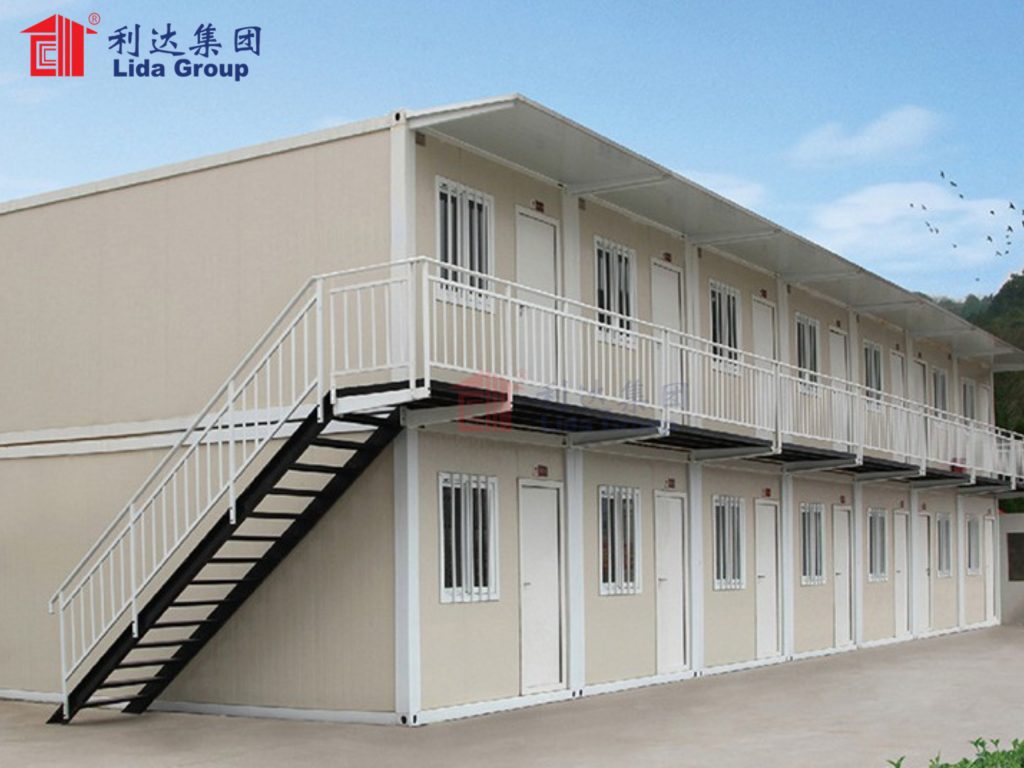
4. Lida Group’s High-Quality Container House Solutions: Design and Innovation
4.1 Design Philosophy: Balancing Functionality, Comfort, and Aesthetics
Lida Group’s container house solutions are guided by a design philosophy that prioritizes functionality, comfort, and aesthetics. The company recognizes that housing is not just about providing shelter but also about creating spaces where people can live, work, and thrive. As a result, their container houses are designed to maximize interior space, optimize natural light and ventilation, and create comfortable living environments that rival traditional homes.
Functionality is at the core of Lida Group’s designs. Container modules are carefully laid out to include essential living areas such as bedrooms, bathrooms, kitchens, and living rooms, with efficient storage solutions to maximize usable space. Open floor plans are often used to create a sense of spaciousness, while sliding doors and partitions allow for flexible use of space.
Comfort is another key focus. Lida Group integrates insulation materials into walls, floors, and roofs to regulate indoor temperatures, ensuring that container houses remain cool in hot climates and warm in cold ones. High-quality windows and doors are installed to reduce noise transmission and improve energy efficiency, while ventilation systems (natural or mechanical) ensure good air circulation. Interior finishes, such as eco-friendly paints, flooring, and fixtures, are chosen for their durability, safety, and aesthetic appeal, creating welcoming and modern living spaces.
Aesthetics are not overlooked. Lida Group’s design team works to transform the industrial look of shipping containers into visually appealing homes. Exterior cladding materials such as wood, fiber cement, or metal panels are used to give container houses a more traditional or contemporary appearance, blending them with their surrounding environments. Landscaping, outdoor spaces, and architectural details like porches or balconies are also incorporated to enhance curb appeal and create a sense of home.
4.2 Advanced Manufacturing Processes
Lida Group’s commitment to quality is evident in its advanced manufacturing processes. The company’s production facilities are equipped with state-of-the-art technology, including computer-aided design (CAD) software, 3D modeling tools, and automated machinery, to ensure precision and consistency in every container house module.
The manufacturing process begins with the selection and preparation of shipping containers. Containers are inspected for structural integrity, cleaned, and treated to remove rust or contaminants. Any necessary modifications, such as cutting openings for windows and doors, are made using precision cutting tools to ensure accuracy. The containers are then reinforced with additional steel framing where needed to support insulation, interior finishes, and fixtures.
Next, insulation is installed to meet thermal performance requirements. Lida Group uses a variety of insulation materials, including spray foam, mineral wool, and rigid foam boards, depending on the climate and client needs. Electrical, plumbing, and HVAC (heating, ventilation, and air conditioning) systems are then integrated into the container modules. These systems are pre-installed in the factory, with wiring, pipes, and ductwork carefully routed to avoid interference with structural elements and ensure easy maintenance.
Interior and exterior finishes are applied in the final stages of manufacturing. Flooring materials such as vinyl, laminate, or hardwood are installed, along with wall panels, ceiling tiles, and fixtures like cabinets, countertops, and lighting. Exterior cladding, roofing materials, and windows are added to complete the module. Throughout the manufacturing process, rigorous quality control checks are conducted to ensure that each module meets Lida Group’s strict standards for safety, performance, and durability.
4.3 Customization Options for Diverse Needs
Lida Group understands that housing needs vary widely across different regions, climates, and cultures, which is why its container house solutions offer extensive customization options. Clients can choose from a range of module sizes, including standard 20-foot and 40-foot containers, as well as modified sizes for specific applications. The number of modules can be adjusted to create homes of varying square footage, from compact 320-square-foot units to spacious multi-module homes over 1,000 square feet.
Interior layouts are fully customizable. Clients can select the number of bedrooms and bathrooms, the configuration of the kitchen and living areas, and the inclusion of features such as home offices, storage rooms, or outdoor patios. Lida Group’s design team works closely with clients to understand their lifestyle needs, cultural preferences, and budget constraints, developing tailored solutions that meet their unique requirements.
Exterior designs can also be customized to suit local architectural styles and environmental conditions. In tropical regions, container houses may feature large windows for natural ventilation, overhangs to provide shade, and lightweight cladding to reflect heat. In colder climates, designs may include thicker insulation, smaller windows, and sloped roofs to shed snow. For communities with specific aesthetic preferences, Lida Group can incorporate local materials or design elements, ensuring that the container houses blend harmoniously with their surroundings.
4.4 Integration of Smart and Sustainable Features
Lida Group is at the forefront of integrating smart and sustainable features into its container house solutions. Recognizing the importance of energy efficiency and connectivity, the company offers a range of options to enhance the functionality and sustainability of its homes.
Smart home technology can be integrated into container houses, including energy management systems that monitor and optimize electricity usage, smart thermostats that adjust temperatures based on occupancy, and security systems with remote monitoring capabilities. These features not only improve the quality of life for residents but also reduce energy consumption and lower utility costs.
Sustainable features are a standard part of many Lida Group container house designs. Solar panels can be installed on roofs to generate renewable electricity, reducing reliance on the grid and lowering carbon emissions. Battery storage systems can store excess solar energy for use during power outages or at night. Rainwater harvesting systems collect and filter rainwater for non-potable uses such as irrigation, toilet flushing, and laundry, conserving municipal water supplies.
In addition, Lida Group uses eco-friendly materials throughout its container houses. Low-VOC (volatile organic compound) paints and adhesives reduce indoor air pollution, while recycled or sustainably sourced materials for flooring, cabinets, and fixtures minimize environmental impact. The company also prioritizes the use of energy-efficient appliances, such as refrigerators, stoves, and water heaters, to further reduce energy consumption.
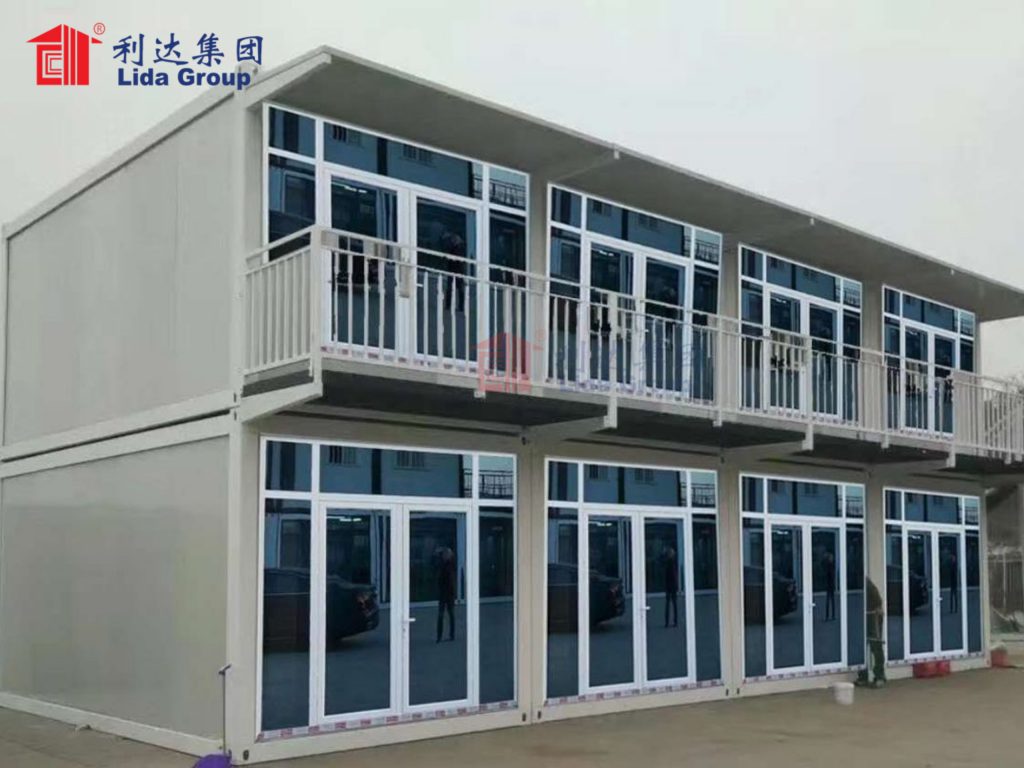
5. Lida Group’s Container House Solutions for Global Applications
5.1 Emergency and Post-Disaster Housing
In the aftermath of natural disasters, communities require immediate access to safe and functional shelter. Lida Group’s container house solutions are ideally suited for emergency and post-disaster housing due to their rapid deployment capabilities. Container modules can be transported by truck, ship, or even air in some cases, reaching remote or disaster-stricken areas quickly. Once on-site, they can be assembled in days, providing displaced families with a secure place to live while longer-term housing solutions are developed.
Lida Group’s emergency container houses are designed to be self-contained, with essential amenities such as beds, lighting, ventilation, and basic sanitation facilities. They can be equipped with solar panels and battery storage to provide electricity in areas where the power grid has been damaged, and water filtration systems to ensure access to clean drinking water. The durability of container houses also makes them resistant to the harsh conditions often present in post-disaster environments, such as heavy rain, strong winds, and debris.
5.2 Affordable Urban Housing
In crowded urban areas, Lida Group’s container house solutions offer a viable option for affordable housing. By stacking and combining container modules, the company can create multi-story apartment complexes that maximize land use, providing more housing units in a smaller footprint than traditional low-rise housing. These complexes can be built quickly and at a lower cost than traditional apartments, making them accessible to low- and middle-income households.
Urban container house complexes designed by Lida Group often include shared amenities such as community gardens, playgrounds, laundry facilities, and rooftop terraces, enhancing the quality of life for residents. They are also designed to integrate with existing urban infrastructure, connecting to municipal water, sewer, and electricity systems where available. In cases where infrastructure is limited, off-grid solutions such as solar power and rainwater harvesting can be incorporated to ensure self-sufficiency.
5.3 Rural and Remote Community Housing
Rural and remote communities often face unique housing challenges, including limited access to construction materials, skilled labor, and infrastructure. Lida Group’s container house solutions address these challenges by providing prefabricated, self-contained housing that can be delivered to even the most isolated areas. The durability of container houses makes them suitable for rural environments, where exposure to harsh weather, pests, and rough terrain can damage traditional structures.
In rural applications, Lida Group’s container houses can be customized to meet agricultural or lifestyle needs. For example, they can include storage areas for farming equipment, workshops for small-scale production, or porches for outdoor activities. The integration of solar power and rainwater harvesting makes them ideal for areas without reliable access to electricity or clean water, improving living conditions and supporting sustainable rural development.
5.4 Temporary and Workforce Housing
Industries such as construction, mining, and oil and gas often require temporary housing for workers in remote locations. Lida Group’s container house solutions provide comfortable and functional temporary housing for these workforces. Container modules can be quickly deployed to job sites, creating camps that include dormitories, dining facilities, recreational areas, and administrative offices.
These workforce housing camps are designed to be durable and low-maintenance, with features that enhance worker comfort, such as air conditioning, heating, and sound insulation. They can be easily relocated once a project is completed, making them a cost-effective solution for temporary housing needs. Lida Group can also customize the camps to meet the specific requirements of different industries, ensuring that they comply with safety regulations and provide a suitable living environment for workers.
5.5 Educational and Healthcare Facilities
Beyond housing, Lida Group’s container modules can be repurposed to create educational and healthcare facilities in underserved communities. Container classrooms provide a quick and affordable way to expand school capacity in areas with growing student populations, especially in rural or low-income urban areas. These classrooms are designed to be bright, well-ventilated, and equipped with basic educational tools such as desks, whiteboards, and lighting, creating a conducive learning environment.
Similarly, container-based healthcare clinics can be deployed to provide medical services in remote areas where traditional clinics are scarce. These clinics can include examination rooms, treatment areas, storage for medical supplies, and even basic laboratory facilities. They can be equipped with solar power and refrigeration units to store vaccines and medications, ensuring that essential healthcare services are available to communities in need.
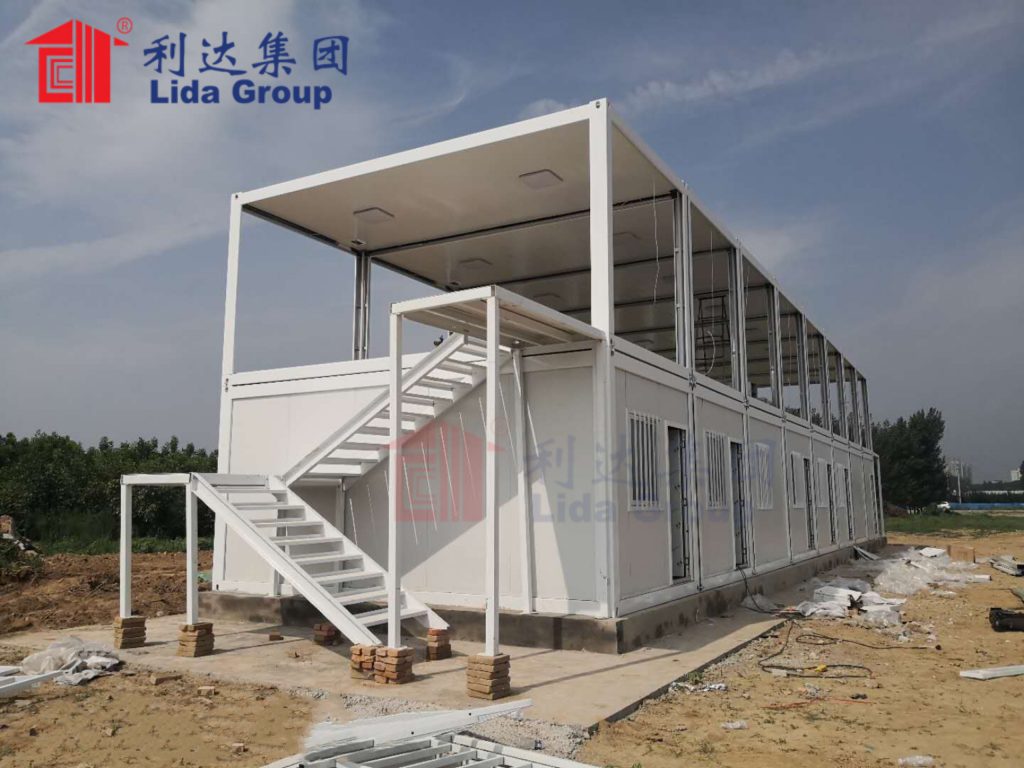
6. Overcoming Challenges in Prefab Container Housing Adoption
6.1 Regulatory and Zoning Barriers
One of the main challenges in the adoption of prefab container housing is navigating regulatory and zoning barriers. Many regions have outdated building codes and zoning regulations that were developed for traditional construction methods and do not explicitly address container houses. This can create uncertainty for developers and clients, as they may face delays or rejections when seeking permits for container house projects.
Lida Group has proactively worked to overcome these barriers by engaging with policymakers, regulatory bodies, and industry associations. The company advocates for the updating of building codes to recognize container houses as a legitimate housing type, providing data and evidence on the safety, durability, and sustainability of its solutions. Lida Group also works closely with local authorities to ensure that its container house projects comply with existing regulations, providing detailed technical documentation and conducting site inspections to demonstrate compliance.
6.2 Public Perception and Stigma
Despite the many advantages of container housing, public perception remains a challenge. Some people associate shipping containers with industrial use or low-quality housing, viewing container houses as temporary, unattractive, or unsuitable for long-term living. This stigma can hinder the adoption of container house solutions, even in communities where they could address critical housing needs.
Lida Group is working to change public perception through education and demonstration. The company showcases its high-quality container house designs through case studies, exhibitions, and open houses, allowing people to see firsthand the comfort, aesthetics, and functionality of modern container homes. By highlighting the sustainability, durability, and customization options of its solutions, Lida Group aims to shift public opinion and position container houses as a desirable housing choice.
6.3 Supply Chain and Logistics
The global supply chain for shipping containers and construction materials can be volatile, posing challenges for the production and delivery of prefab container houses. Fluctuations in container availability, rising transportation costs, and delays in the delivery of raw materials can disrupt manufacturing schedules and increase project costs.
Lida Group has addressed these challenges by establishing a robust and diversified supply chain. The company works with multiple suppliers of shipping containers, ensuring a steady supply even during periods of high demand. It also maintains strategic stockpiles of essential materials such as steel, insulation, and fixtures to mitigate the impact of supply chain disruptions. Additionally, Lida Group has optimized its logistics network, partnering with reliable transportation companies to ensure timely delivery of container modules to project sites around the world.
6.4 Technical and Engineering Challenges
Designing and engineering container houses to meet diverse environmental and regulatory requirements can present technical challenges. Container houses must be adapted to different climate zones, from hot and humid tropical regions to cold and snowy temperate areas, requiring careful consideration of insulation, ventilation, and structural reinforcement. They must also comply with local building codes, which can vary widely from one region to another.
Lida Group’s team of engineers and designers has the expertise to address these technical challenges. The company conducts extensive research and testing to develop container house designs that perform well in various climates, using advanced simulation software to analyze thermal performance, structural integrity, and energy efficiency. Lida Group also employs local engineering consultants in different regions to ensure that its container house solutions comply with local codes and standards, making necessary modifications to designs as needed.

7. Future Innovations in Prefab Container Housing
7.1 Digitalization and Building Information Modeling (BIM)
The future of prefab container housing will be increasingly digital, with Lida Group at the forefront of adopting digitalization and Building Information Modeling (BIM) technologies. BIM is a digital representation of a building’s physical and functional characteristics, allowing for collaborative design, simulation, and analysis throughout the project lifecycle. By using BIM, Lida Group can create detailed 3D models of container house projects, enabling designers, engineers, manufacturers, and contractors to work together seamlessly.
BIM technology allows for virtual testing of container house designs, identifying potential issues such as structural weaknesses, clashes between systems (e.g., electrical and plumbing), or thermal inefficiencies before production begins. This reduces the need for costly rework and ensures that designs are optimized for performance, safety, and sustainability. BIM also facilitates better project management, as it provides a centralized platform for tracking project progress, managing materials, and coordinating schedules, improving efficiency and reducing delays.
7.2 Advanced Materials and Technologies
Lida Group is continuously exploring advanced materials and technologies to enhance the performance and sustainability of its container house solutions. One area of focus is the development of high-performance insulation materials that provide better thermal resistance while being lighter and more eco-friendly than traditional options. Aerogels, for example, are ultra-lightweight materials with excellent insulation properties that could potentially be used in container houses to improve energy efficiency.
Another area of innovation is the integration of renewable energy technologies beyond solar power. This includes small-scale wind turbines for areas with consistent wind resources, and geothermal heating and cooling systems for regions with suitable geology. These technologies could further reduce the carbon footprint of container houses and enhance their energy independence.
Lida Group is also exploring the use of 3D printing for certain components of container houses, such as custom interior fixtures, wall panels, or decorative elements. 3D printing allows for greater design flexibility, reduced material waste, and faster production of complex parts, potentially lowering costs and improving customization options for clients.
7.3 Modular Expansion and Adaptability
Future container house solutions from Lida Group will focus on even greater modular expansion and adaptability. The company is developing modular systems that allow container houses to be easily expanded or reconfigured as residents’ needs change over time. For example, a small starter home for a young couple could be expanded with additional modules as the family grows, or a home office module could be added to accommodate remote work.
These expandable container houses will use standardized connection systems that allow modules to be added or removed without major structural modifications, ensuring flexibility and cost-effectiveness. They will also incorporate smart design features such as movable walls, foldable furniture, and multi-functional spaces to maximize usability and adaptability.
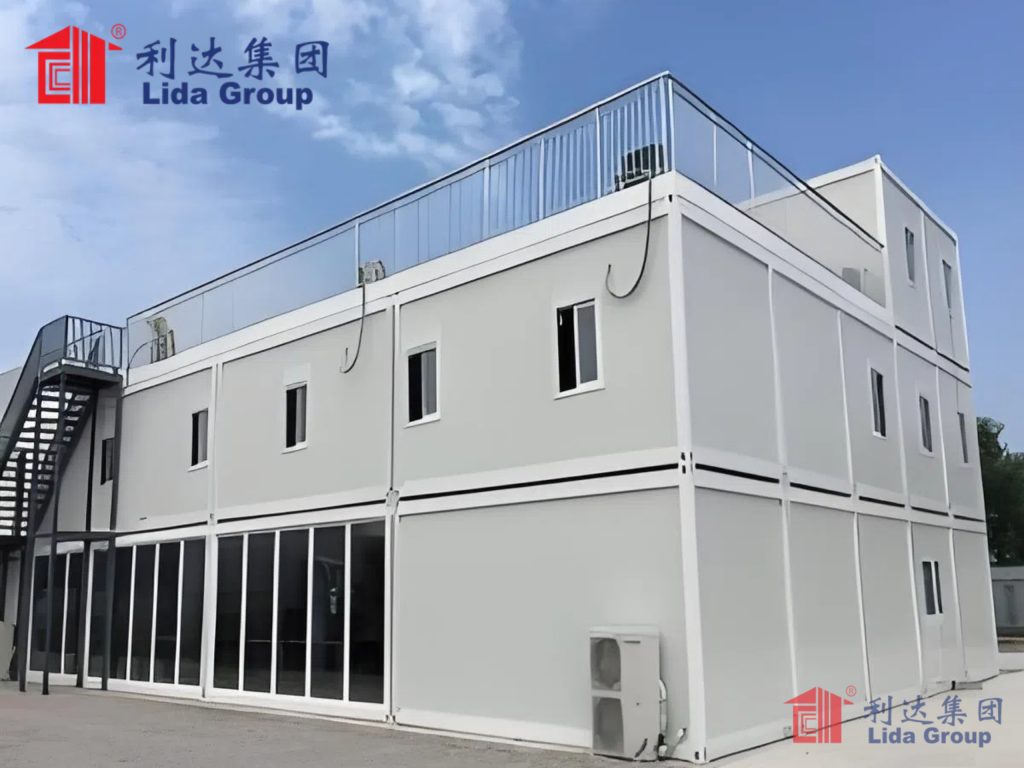
8. Conclusion
In conclusion, Lida Group has emerged as a trailblazer in addressing the global housing shortage through its high-quality container house solutions built on advanced prefab container construction techniques. As the global population grows and urbanizes, the need for affordable, sustainable, and rapidly deployable housing has never been more urgent, and Lida Group’s innovative approach offers a compelling solution to this pressing challenge.
The advantages of prefab container construction—including speed, cost-effectiveness, sustainability, durability, and flexibility—make it an ideal housing solution for diverse global applications. From emergency post-disaster shelters to affordable urban apartments, rural community housing, and temporary workforce camps, Lida Group’s container house solutions have proven their versatility and effectiveness in meeting a wide range of housing needs.
Lida Group’s commitment to quality is evident in its advanced manufacturing processes, which leverage state-of-the-art technology to ensure precision, consistency, and durability in every container house module. The company’s focus on customization allows it to tailor solutions to the unique requirements of different regions, climates, and cultures, while its integration of smart and sustainable features enhances the functionality and environmental performance of its homes.
While challenges such as regulatory barriers, public perception, supply chain issues, and technical engineering hurdles exist, Lida Group has demonstrated a proactive approach to overcoming these obstacles through advocacy, education, supply chain diversification, and technical innovation. By engaging with policymakers, showcasing the quality of its solutions, and investing in research and development, the company is helping to pave the way for wider adoption of prefab container housing.
Looking to the future, Lida Group is well-positioned to continue leading the way in container house innovation. With a focus on digitalization, advanced materials, renewable energy integration, and enhanced modular adaptability, the company is poised to develop even more efficient, sustainable, and flexible housing solutions that meet the evolving needs of communities worldwide.
In a world grappling with housing shortages, climate change, and the need for sustainable development, Lida Group’s prefab container house solutions represent more than just a housing alternative—they represent a vision for a more equitable, efficient, and environmentally responsible built environment. Through its pioneering work, Lida Group is not only providing homes but also contributing to a more sustainable and resilient future for communities around the globe.
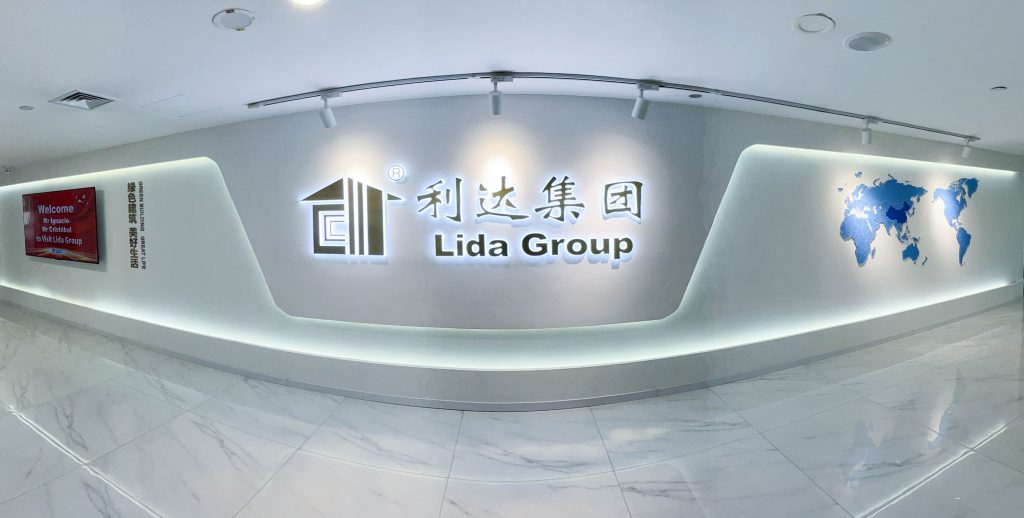
Related news
-
Global Supply Chain Upgrade: Lida Group Delivers Rapid Steel Frame Building Solutions for Critical Warehousing Needs
2025-07-29 15:43:39
-
Disaster Response Breakthrough: Lida Group Deploys High Quality Prefab Houses with Mobile Sandwich Panel Systems in 72 Hours
2025-07-17 14:19:59
-
Future-Proof Housing: Lida Group Integrates Smart Tech into Mobile High Quality Prefab Houses Using Sandwich Panel Architecture
2025-07-14 16:15:58
contact us
- Tel: +86-532-88966982
- Whatsapp: +86-13793209022
- E-mail: sales@lidajituan.com


